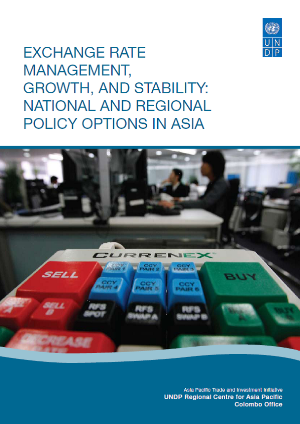Exchange Rate Management, Growth and Stability: National and Regional Policy Options in Asia

Exchange Rate Management, Growth and Stability: National and Regional Policy Options in Asia
July 27, 2015
The ability of developing countries to achieve exchange rate stability has been significantly hampered by their deeper integration into international financial markets and increased openness to unstable capital flows. As the study notes, most damaging swings in capital flows have been a result of global factors beyond the control of developing countries notably by macroeconomic and financial conditions in major industrial countries. There exist no effective multilateral arrangements to discipline either policies in countries with disproportionately large impact on global financial conditions or financial markets. Developing countries have thus become increasingly vulnerable to external trade and financial shocks as a result of their greater openness.
The study argues that periods of severe economic shocks and disruptions have often led to significant changes in policy and institutions such as the creation of the Bretton Woods system, initiation of a process of monetary integration in Europe and even the triggering of Asian monetary cooperation post the 1997 crisis. In a similar vein, the conditions leading up to the current financial crisis and calls and initiatives for tighter regulation of international financial markets provide an impetus strengthening the case of deeper monetary integration in East Asia including a common currency regime and eventually, a monetary union.

 Locations
Locations



